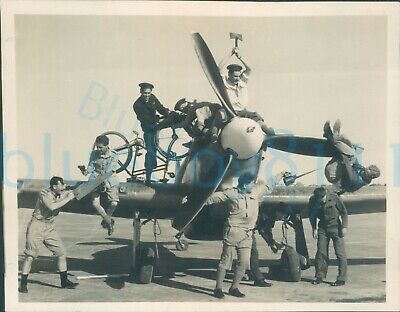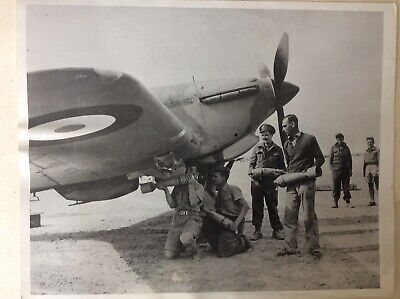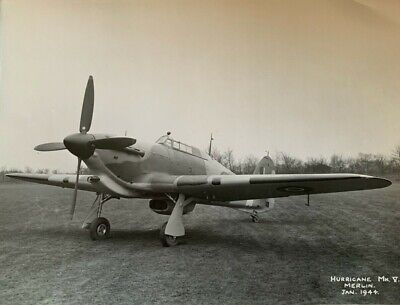Good shots!
Navigation
Install the app
How to install the app on iOS
Follow along with the video below to see how to install our site as a web app on your home screen.
Note: This feature may not be available in some browsers.
More options
You are using an out of date browser. It may not display this or other websites correctly.
You should upgrade or use an alternative browser.
You should upgrade or use an alternative browser.
Ad: This forum contains affiliate links to products on Amazon and eBay. More information in Terms and rules
More options
Who Replied?- Thread starter
- #262
Snautzer01
Marshal
- 46,292
- Mar 26, 2007

REPRO Rumänien Rumänische Foto Technic 2WK ME109 HS129 IAR80 IAR39 JU52 JU87 067 | eBay
Entdecken Sie REPRO Rumänien Rumänische Foto Technic 2WK ME109 HS129 IAR80 IAR39 JU52 JU87 067 in der großen Auswahl bei eBay. Kostenlose Lieferung für viele Artikel!
www.ebay.de
Rumania Carpathian Eagle…Hasegawa 1/48 Hawker Hurricane Mk.I Romanian Airforce | iModeler
As an eBay Associate we earn from qualifying purchases.
- Thread starter
- #264
Snautzer01
Marshal
- 46,292
- Mar 26, 2007
Rumania



REPRO Rumänien Rumänische Foto Technic 2WK ME109 HS129 IAR80 IAR39 JU52 JU87 074 | eBay
Entdecken Sie REPRO Rumänien Rumänische Foto Technic 2WK ME109 HS129 IAR80 IAR39 JU52 JU87 074 in der großen Auswahl bei eBay. Kostenlose Lieferung für viele Artikel!
www.ebay.de
Last edited:
As an eBay Associate we earn from qualifying purchases.
Nice shots!
- Thread starter
- #267
Snautzer01
Marshal
- 46,292
- Mar 26, 2007

WW2 1942 Egypt RAF Men on Aircraft plane messing around 5.5x4.5" Orig Photo | eBay
Photo from an album compiled by an RAF Flying Officer during WW2.
www.ebay.com
As an eBay Associate we earn from qualifying purchases.
SaparotRob
Unter Gemeine Geschwader Murmeltier XIII
Great photo! You can see how the RAF ground crews kept their aircraft flying no matter what.
WW2 1942 Egypt RAF Men on Aircraft plane messing around 5.5x4.5" Orig Photo | eBay
Photo from an album compiled by an RAF Flying Officer during WW2.www.ebay.com
View attachment 633370
As an eBay Associate we earn from qualifying purchases.
fubar57
General
I can only find Soviet Hurricanes with one cannon per wing but those don't look Russian
Glider
Major
Middle East Hurricanes often had two of the 20mm cannons removed to try and give them a fighting chance against the Me109's which had a significant performance advantage.
- Thread starter
- #272
Snautzer01
Marshal
- 46,292
- Mar 26, 2007

Aircraft Sent In Crates For Assembly British West Africa 1942 - WW2 Press Photo | eBay
Find many great new & used options and get the best deals for Aircraft Sent In Crates For Assembly British West Africa 1942 - WW2 Press Photo at the best online prices at eBay! Free shipping for many products!
www.ebay.com
As an eBay Associate we earn from qualifying purchases.
SaparotRob
Unter Gemeine Geschwader Murmeltier XIII
"Cheerful co-operation of the native workers". Love that line.
Good shots!
That caught my eye too. It's very much of it's time. You can't imagine a comment like that in any sort of official communique, or anything else for that matter, today."Cheerful co-operation of the native workers". Love that line.
I grew up in West Africa in post-colonial times and, believe me, those 'native workers', cheerful or not, had very little say in what, when or how the space for the airfield was cleared. It may well have been on land that was traditionally owned and farmed by those same workers.
- Thread starter
- #277
Snautzer01
Marshal
- 46,292
- Mar 26, 2007

Press Photo 1941 North Africa RAF 80 Squadron Desert Air Force Hurribombers | eBay
Just a bit used from handling.
www.ebay.com
As an eBay Associate we earn from qualifying purchases.
The date on that image, November 1941, is important. The date is certainly given using the US system (m/d/y).
It was this month that the first fighter-bomber missions were flown in North Africa, by No 80 Squadron, dropping the 40lb fragmentation bombs pictured. They flew support to operation CRUSADER, but what is not mentioned in the propaganda image is that their losses to flak were prohibitive and that they ceased their bombing and strafing attacks on 27th November. This type of loss was precisely how the RAF justified its doctrinal prejudice against such operations.
They had only come about after ACM Sir Arthur Tedder took over as A O C-in-C Middle East in June 1941. He reorganised the RAF's No. 204 Group in the forward area into a separate 'Air Headquarters, Western Desert' and grouped its fighter, light bomber and reconnaissance squadrons into stripped down wings with fewer personnel and increased mobility. In so doing he unwittingly created the RAF's first tactical air force, soon to be known as the Desert Air Force which, in July, came under the command of AV-M Conningham. It was Conningham who developed the communication systems for command and control, with some influence from the work done by A M Barratt and the RAF's Army Co-operation Command, that would eventually underpin the successful use of air power at the battlefront in 1944/45.
It was this month that the first fighter-bomber missions were flown in North Africa, by No 80 Squadron, dropping the 40lb fragmentation bombs pictured. They flew support to operation CRUSADER, but what is not mentioned in the propaganda image is that their losses to flak were prohibitive and that they ceased their bombing and strafing attacks on 27th November. This type of loss was precisely how the RAF justified its doctrinal prejudice against such operations.
They had only come about after ACM Sir Arthur Tedder took over as A O C-in-C Middle East in June 1941. He reorganised the RAF's No. 204 Group in the forward area into a separate 'Air Headquarters, Western Desert' and grouped its fighter, light bomber and reconnaissance squadrons into stripped down wings with fewer personnel and increased mobility. In so doing he unwittingly created the RAF's first tactical air force, soon to be known as the Desert Air Force which, in July, came under the command of AV-M Conningham. It was Conningham who developed the communication systems for command and control, with some influence from the work done by A M Barratt and the RAF's Army Co-operation Command, that would eventually underpin the successful use of air power at the battlefront in 1944/45.
- Thread starter
- #280
Snautzer01
Marshal
- 46,292
- Mar 26, 2007

WWII: HURRICANE MK. V. MERLIN (O.U.O) ORIGINAL AIR MINISTRY PHOTOGRAPH JAN 1944 | eBay
Find many great new & used options and get the best deals for WWII: HURRICANE MK. V. MERLIN (O.U.O) ORIGINAL AIR MINISTRY PHOTOGRAPH JAN 1944 at the best online prices at eBay! Free shipping for many products!
www.ebay.com
MK5 Jan 1944
As an eBay Associate we earn from qualifying purchases.
Users who are viewing this thread
Total: 1 (members: 0, guests: 1)
Similar threads
- Replies
- 4
- Views
- 589
